BEING, POLLUTED
BEHAVIOURAL CHANGE
INSTALLATION DESIGN
MOTION DESIGN
Guerilla awareness campaign which sees large digital screens invading public spaces which reflect the environment around them and visualise microplastics in the human body.
Through experimenting with physical and digital mediums, I designed a cohesive visual language to both shock and educate people.
Featured on the Arts University Bournemouth website as part of ‘Environment and the curriculum’, view here.
Through experimenting with physical and digital mediums, I designed a cohesive visual language to both shock and educate people.
Featured on the Arts University Bournemouth website as part of ‘Environment and the curriculum’, view here.
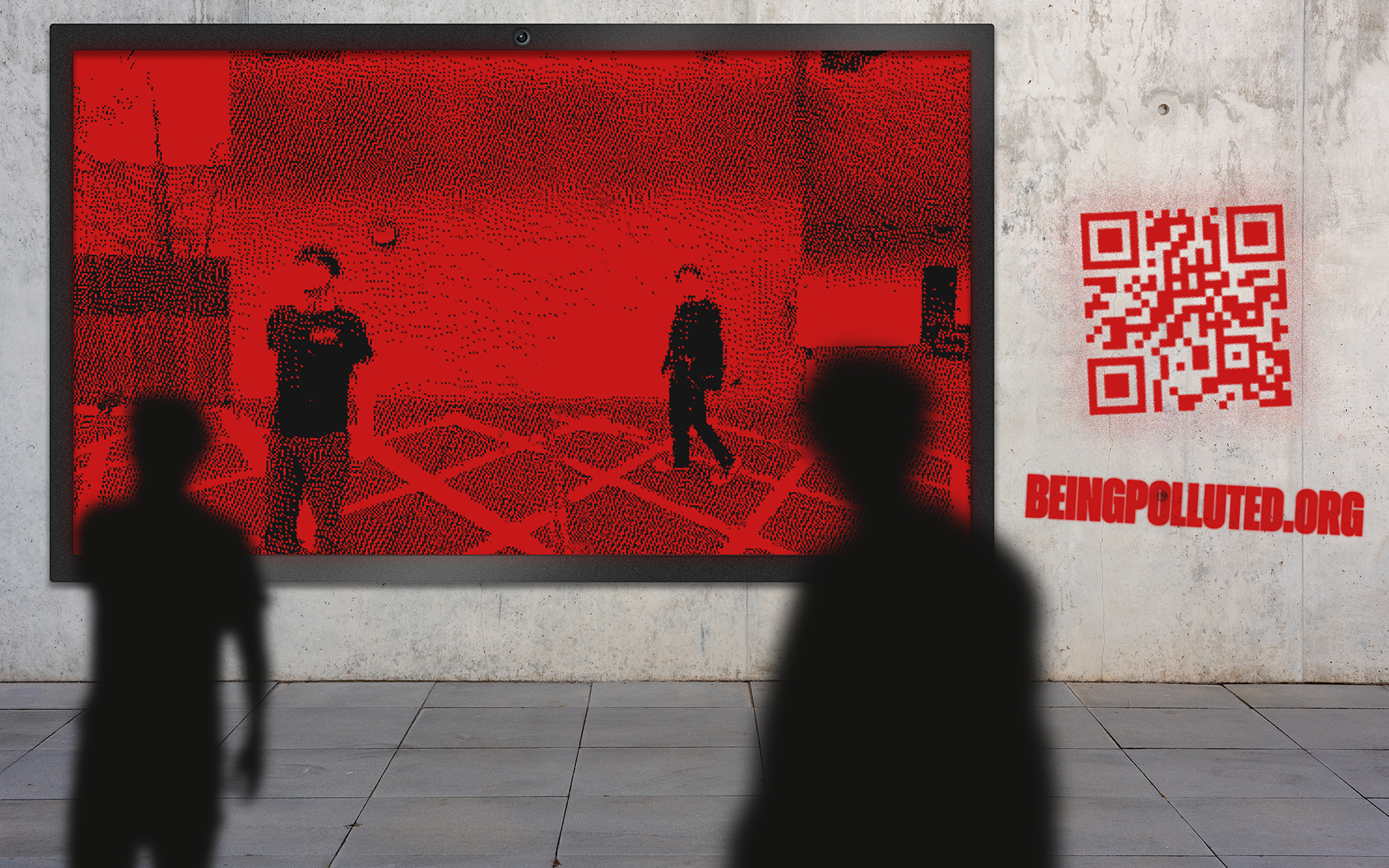
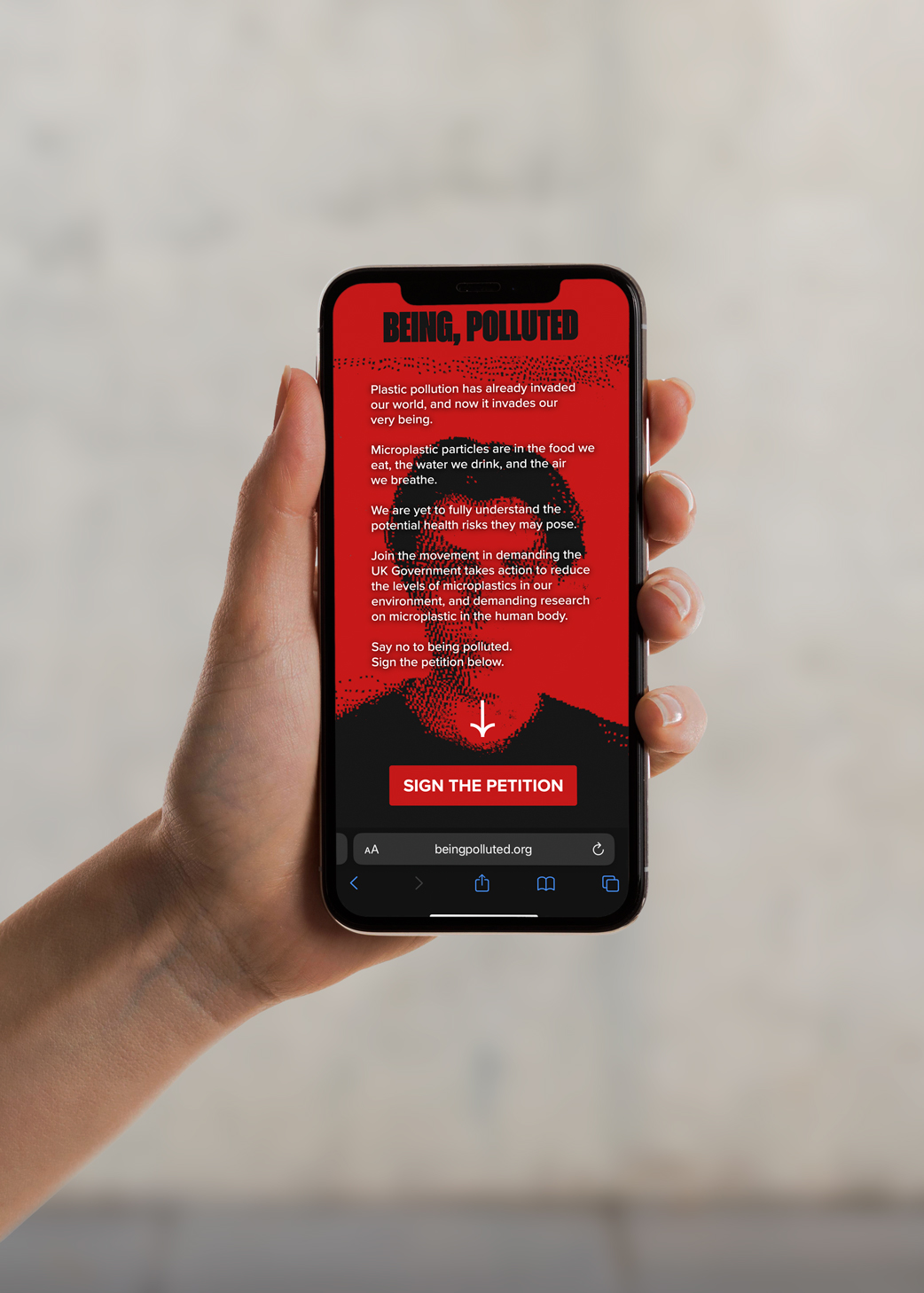
Process
Being, Polluted was the result of my Final Major Project at university. As a self-initiated brief, I picked an issue important to me and one I thought could be explored through design, that being the issue of microplastic pollution. Specifically, I wanted to explore the issue of microplastics within the human body. I asked myself, how can this issue be visualised and how can I make people aware?
The final visual language of Being, Polluted was the result of experimentation with both digital and physical outputs. For my initial visual experiments, I used sand to mimic microscopic particles of plastic and digitally scanned this sand to create textures. I combined with a scanned image of my hand and manipulated this collage in Photoshop in an effort to visually depict microplastics in the human body.
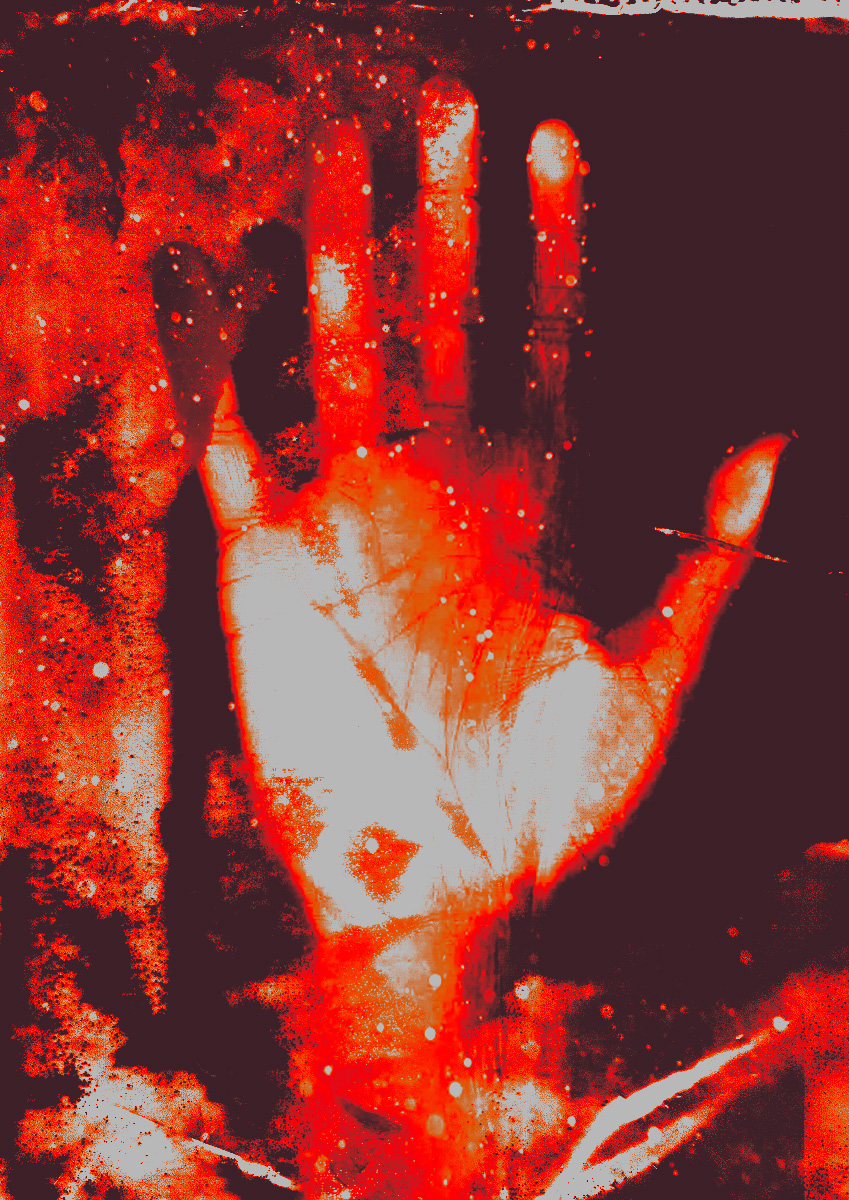
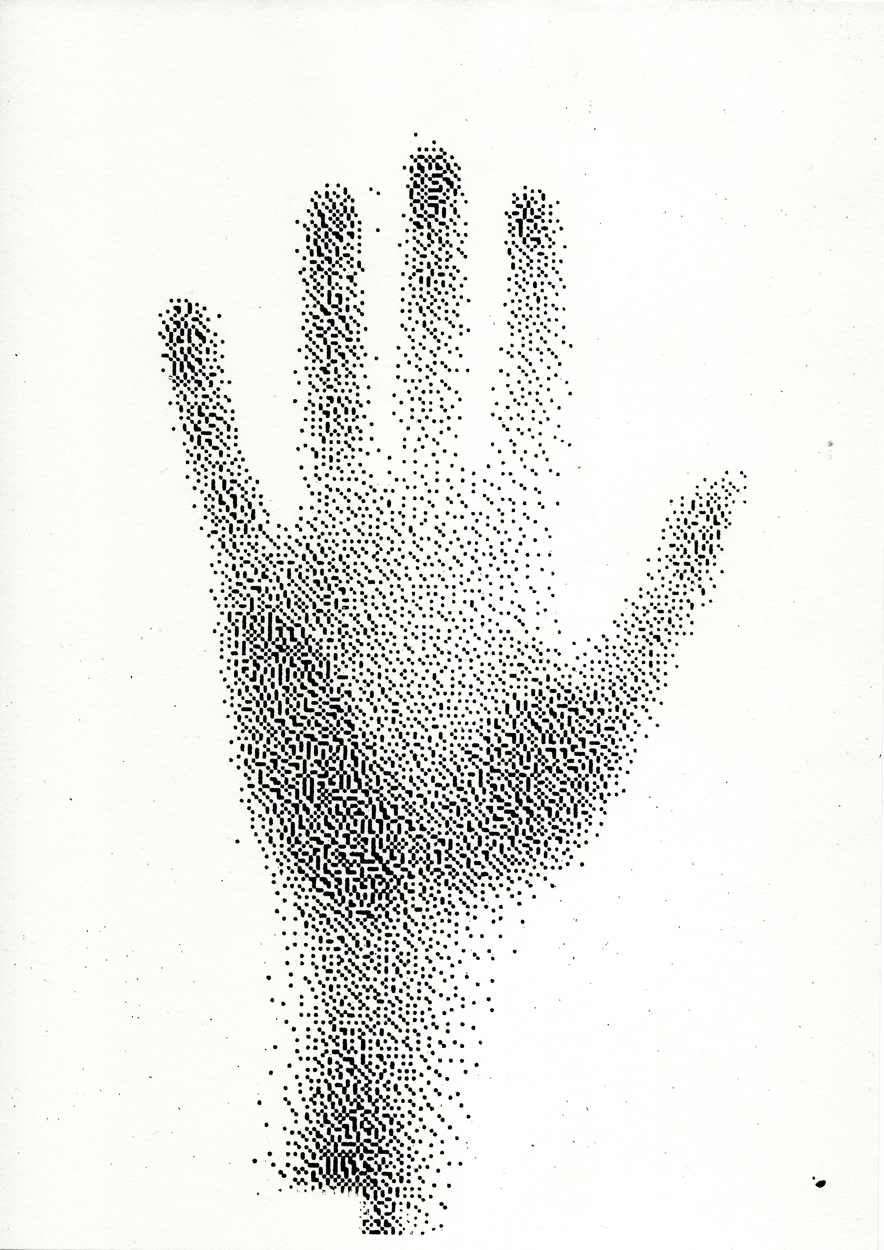
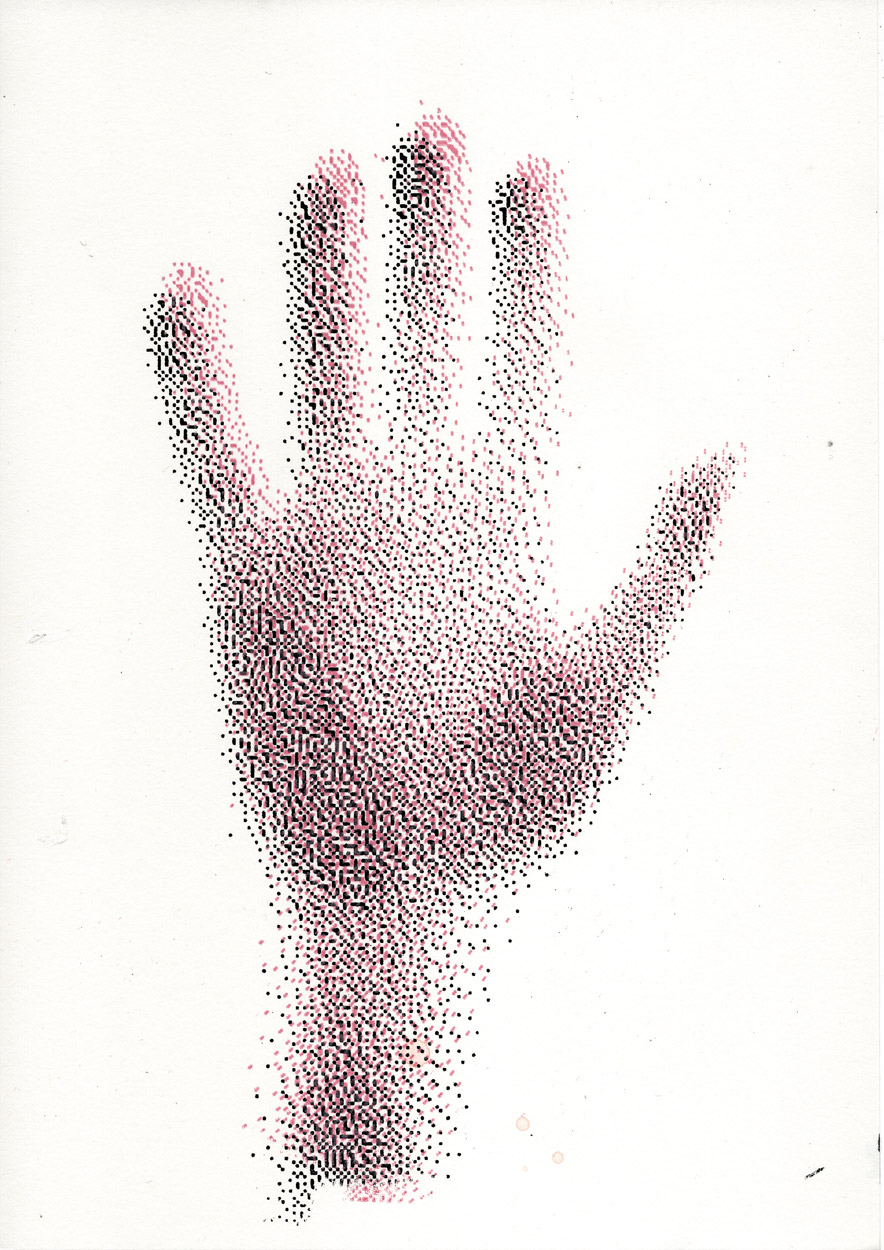
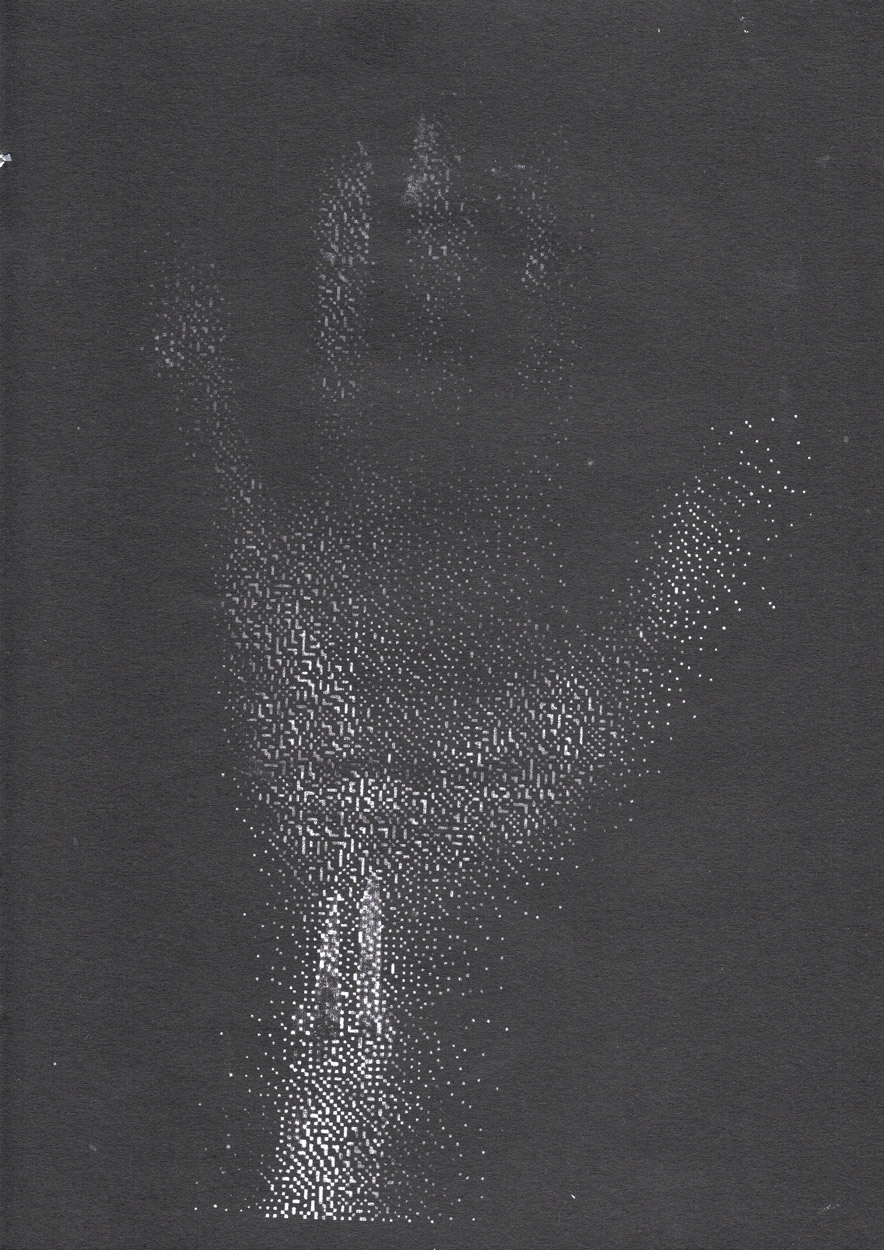

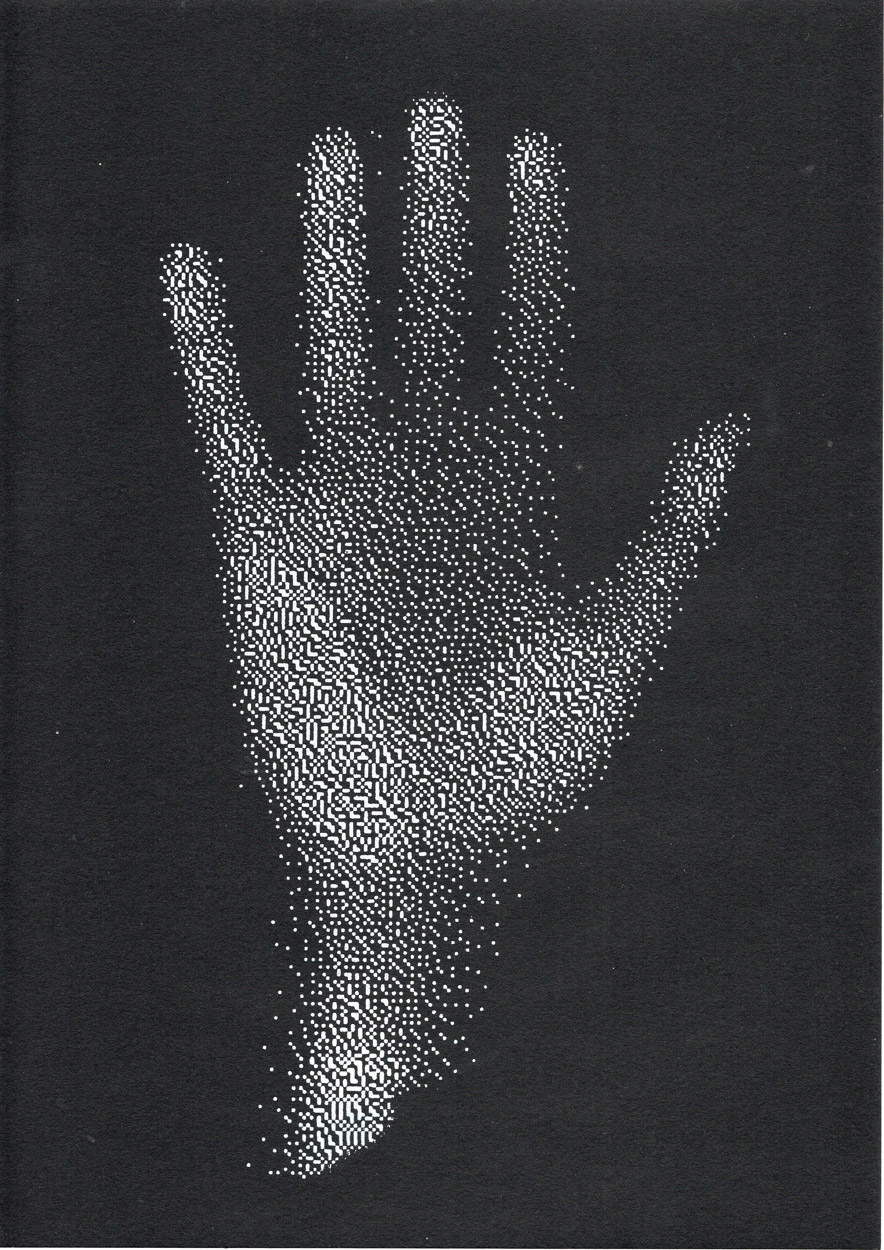
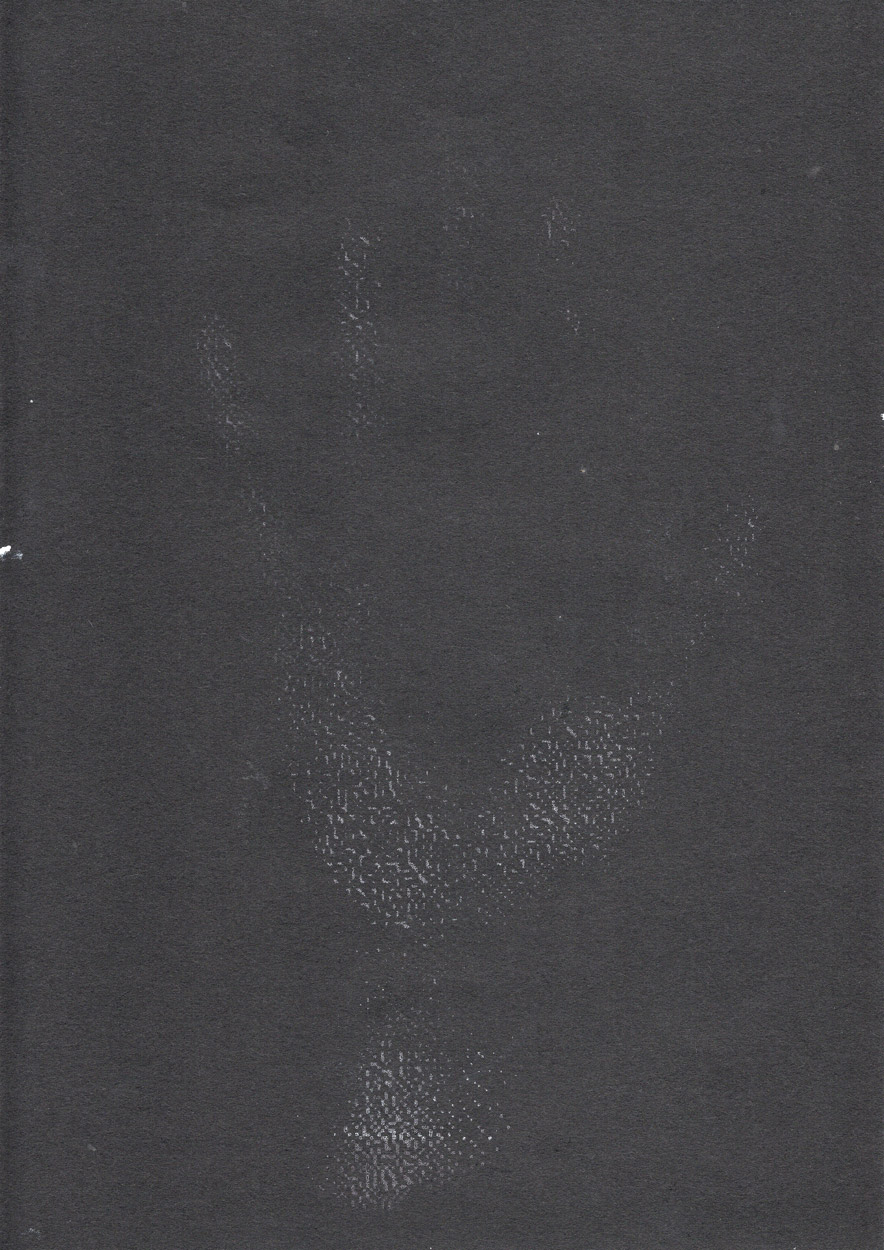
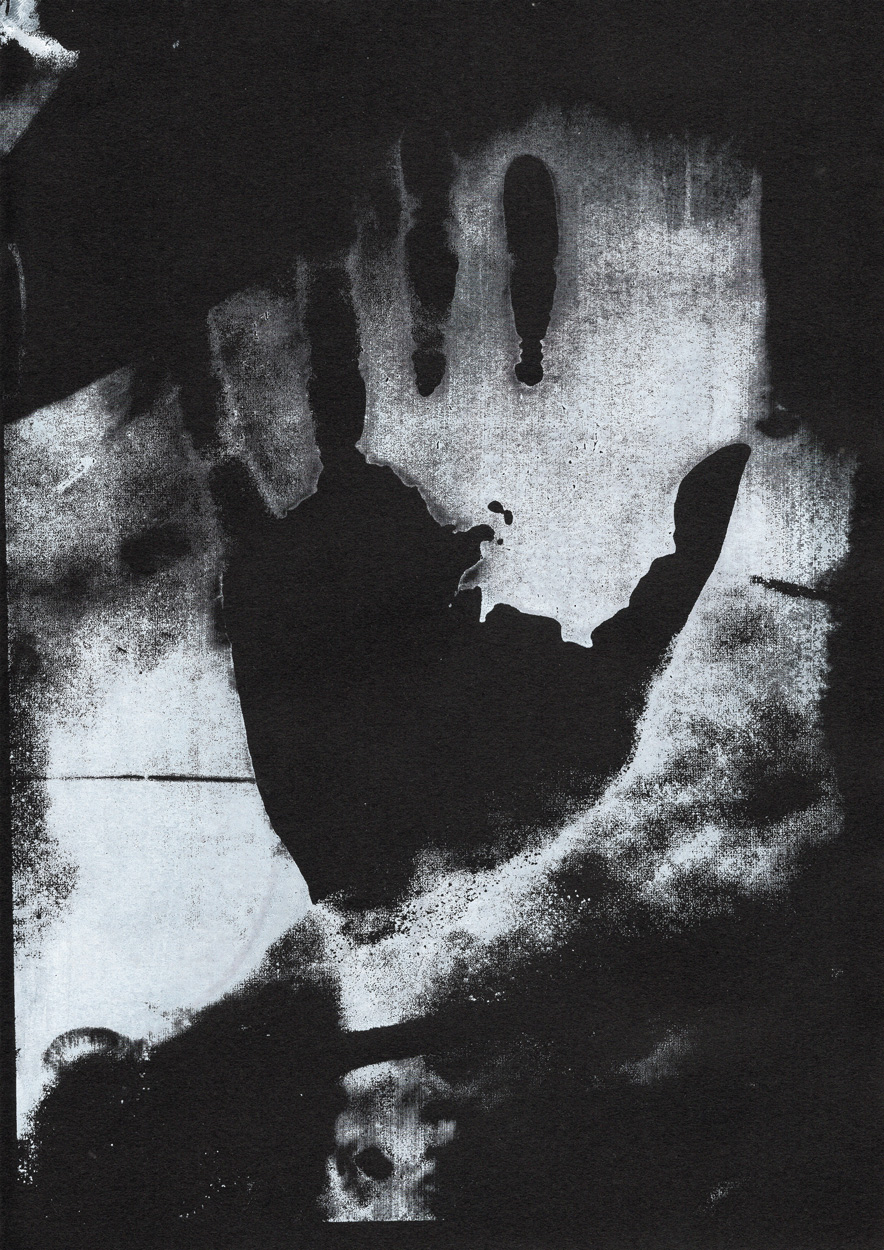

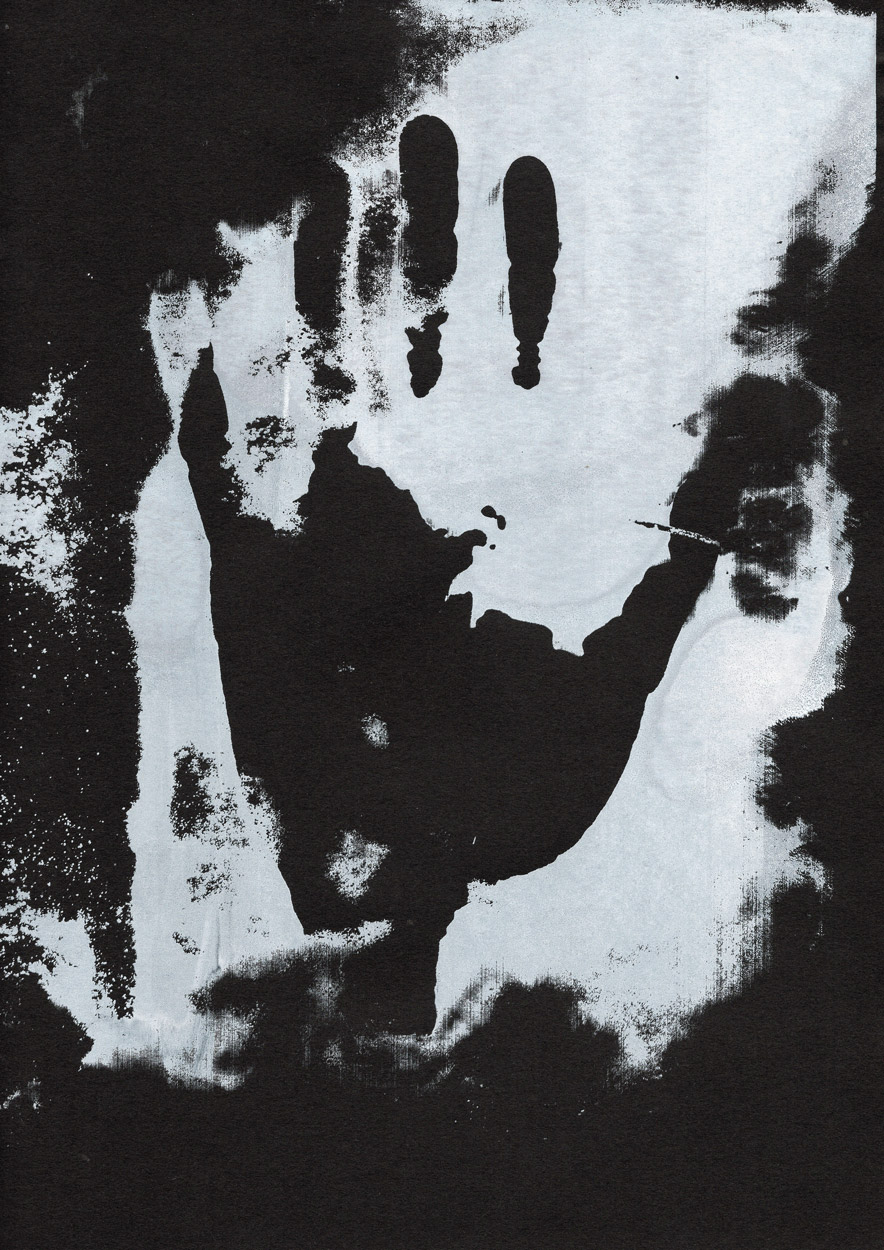
Using the same textures and image of my hand, I produced several screen prints. I chose to screen print these to give the visuals more tangibility, and also to add imperfections caused ink bleeding during the printing process.
I then used a dithered version of the hand image and screen printed this. This image of a body part, made up of small dots, really tied into what I was trying to convey about the human body being made of microplastics. And when screen printed, the imperfections of the dots linked well to how real microplastics would be imperfect.
I then used a dithered version of the hand image and screen printed this. This image of a body part, made up of small dots, really tied into what I was trying to convey about the human body being made of microplastics. And when screen printed, the imperfections of the dots linked well to how real microplastics would be imperfect.
Another physical experiment involved filling a blood bag with fake blood and coloured sand. This created an interesting sensory experience, as the ‘microplastics’ in the liquid were not apparent until the bag was moved and interacted with. When I presented this to people, they would spend time moving it in their hands and playing with it to manipulate the ‘microplastics’ inside.
This insight led to the decision that my final visual language should be influenced by user interaction in some way, as it created a more personal experience.
This insight led to the decision that my final visual language should be influenced by user interaction in some way, as it created a more personal experience.
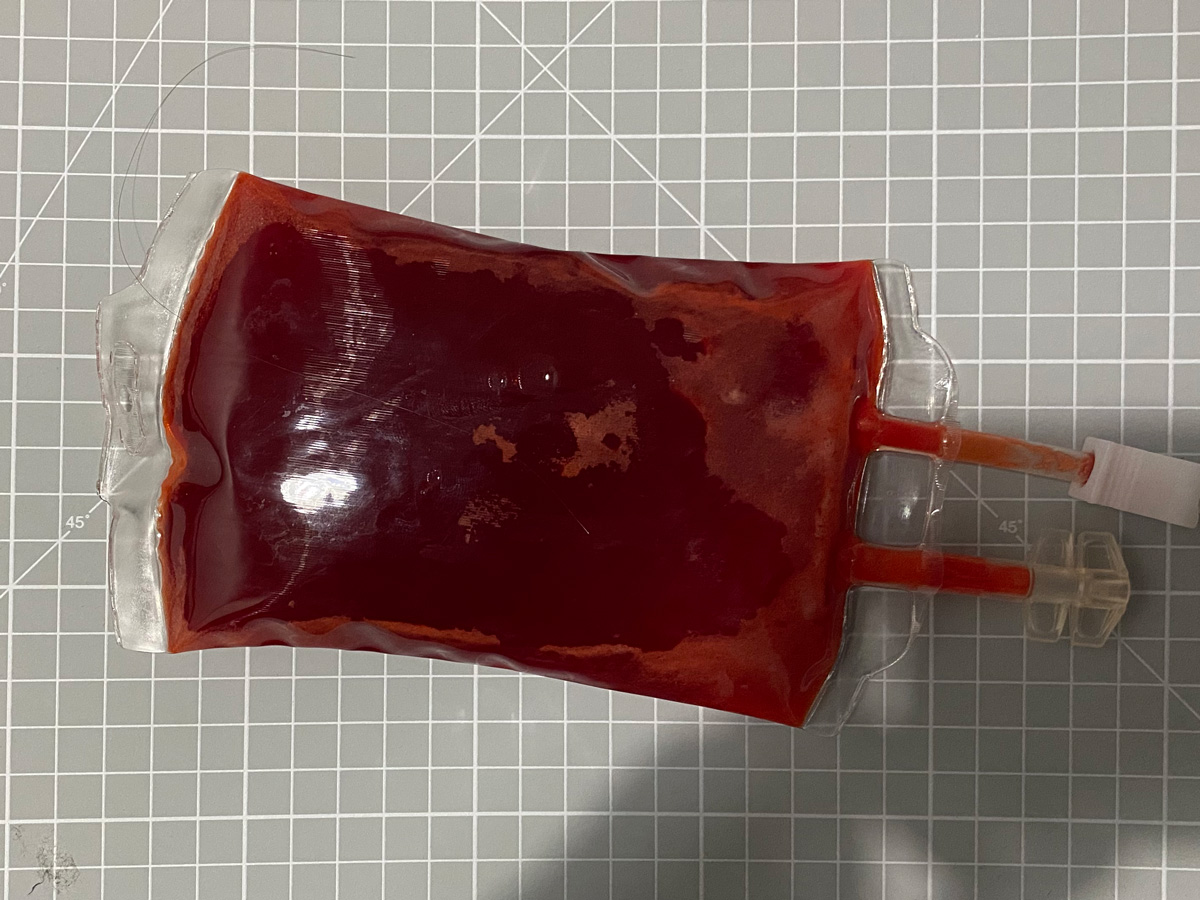
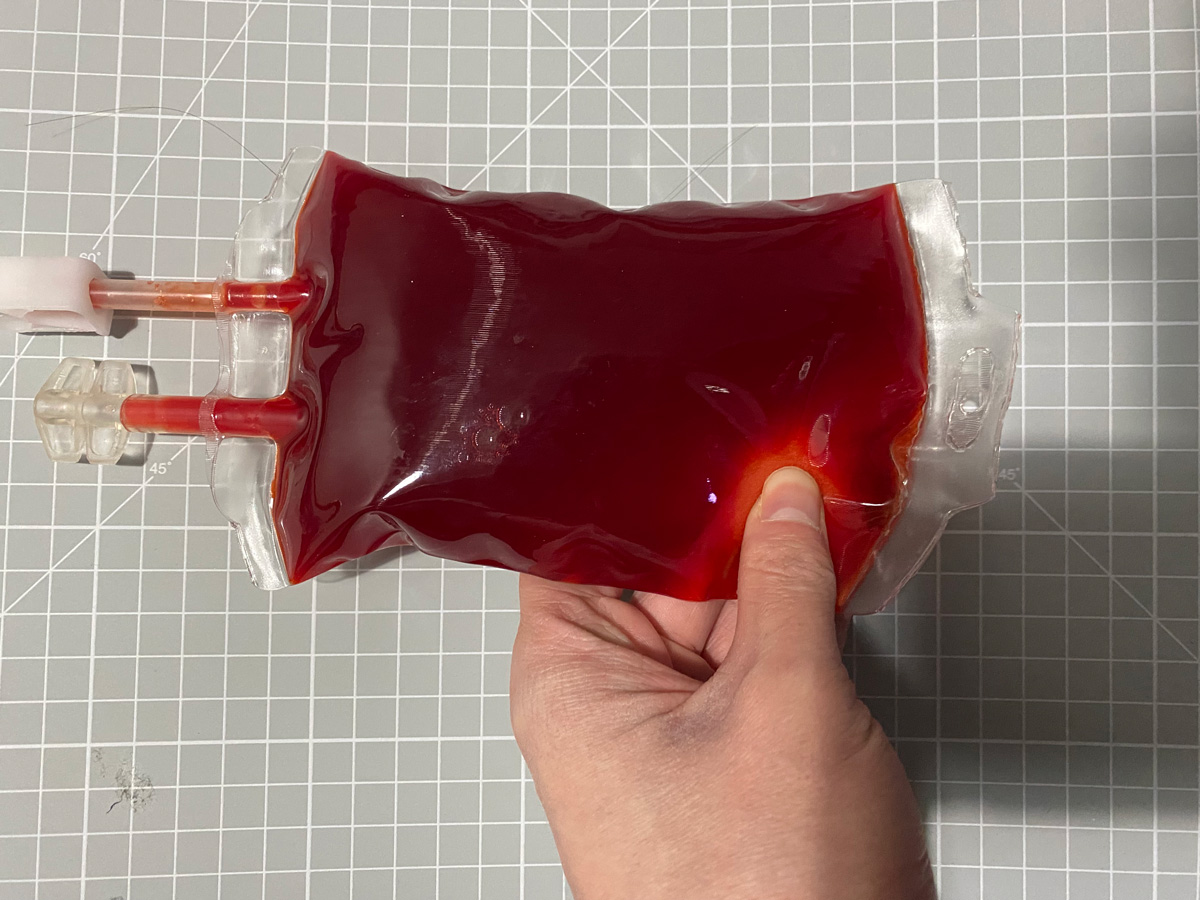
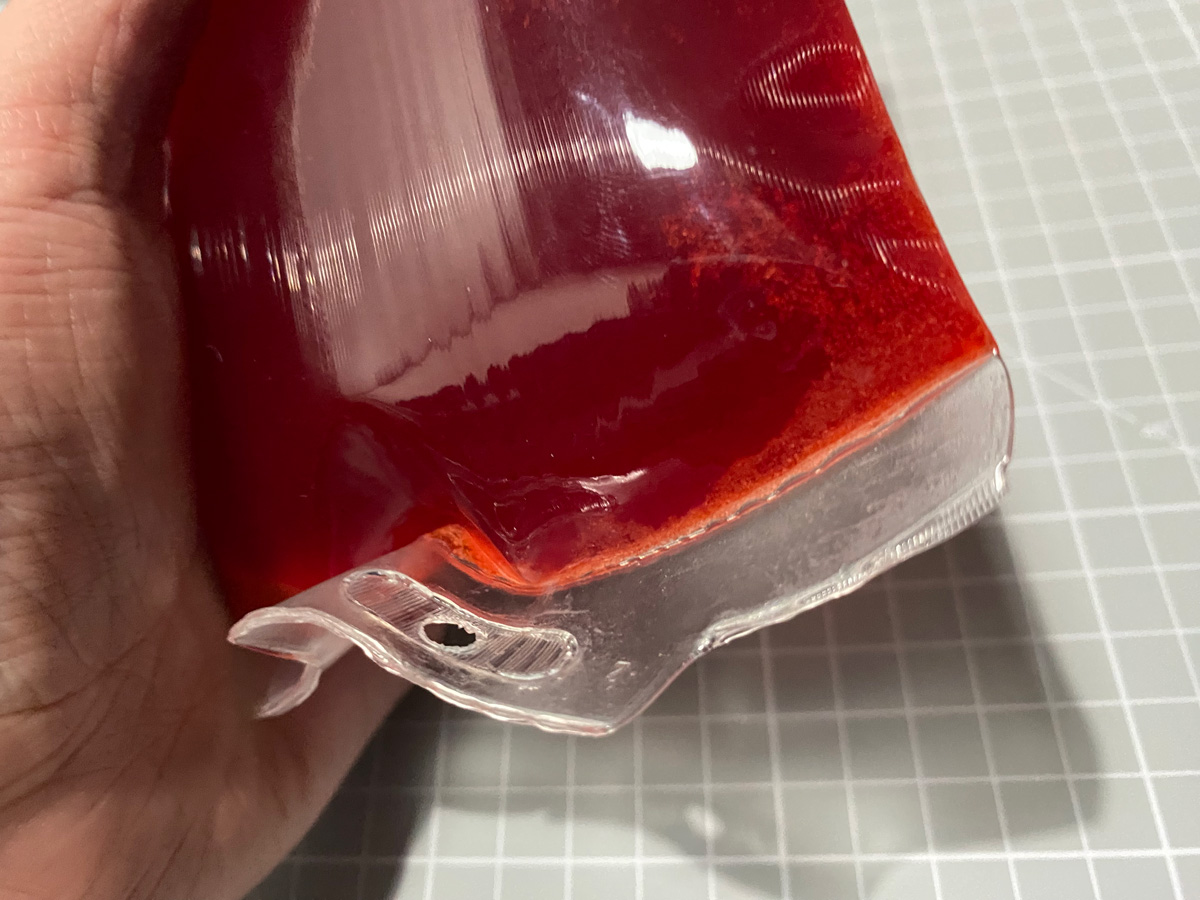
Inspired by my physical experiments, I experimented with typography in motion through a particle based system. This was designed in After Effects using a layer of particle shapes manipulated by an underlying layer of type.
While I liked the result, it was too digital and clean compared to my previous analogue visuals.
While I liked the result, it was too digital and clean compared to my previous analogue visuals.
I wanted to replicate the distressed and imperfect look of the dithered screen prints, this time in motion. Using the blood bag footage I created a visual test, built in After Effects using a variety of effects and adjustments to match the screen prints.
Thinking on how I could add interaction, I began developing concepts for how this visual style could be applied to video in real time and the context for where this would be found. My final concept evolved into the idea of large digital displays placed in public areas which would reflect video input.
Thinking on how I could add interaction, I began developing concepts for how this visual style could be applied to video in real time and the context for where this would be found. My final concept evolved into the idea of large digital displays placed in public areas which would reflect video input.
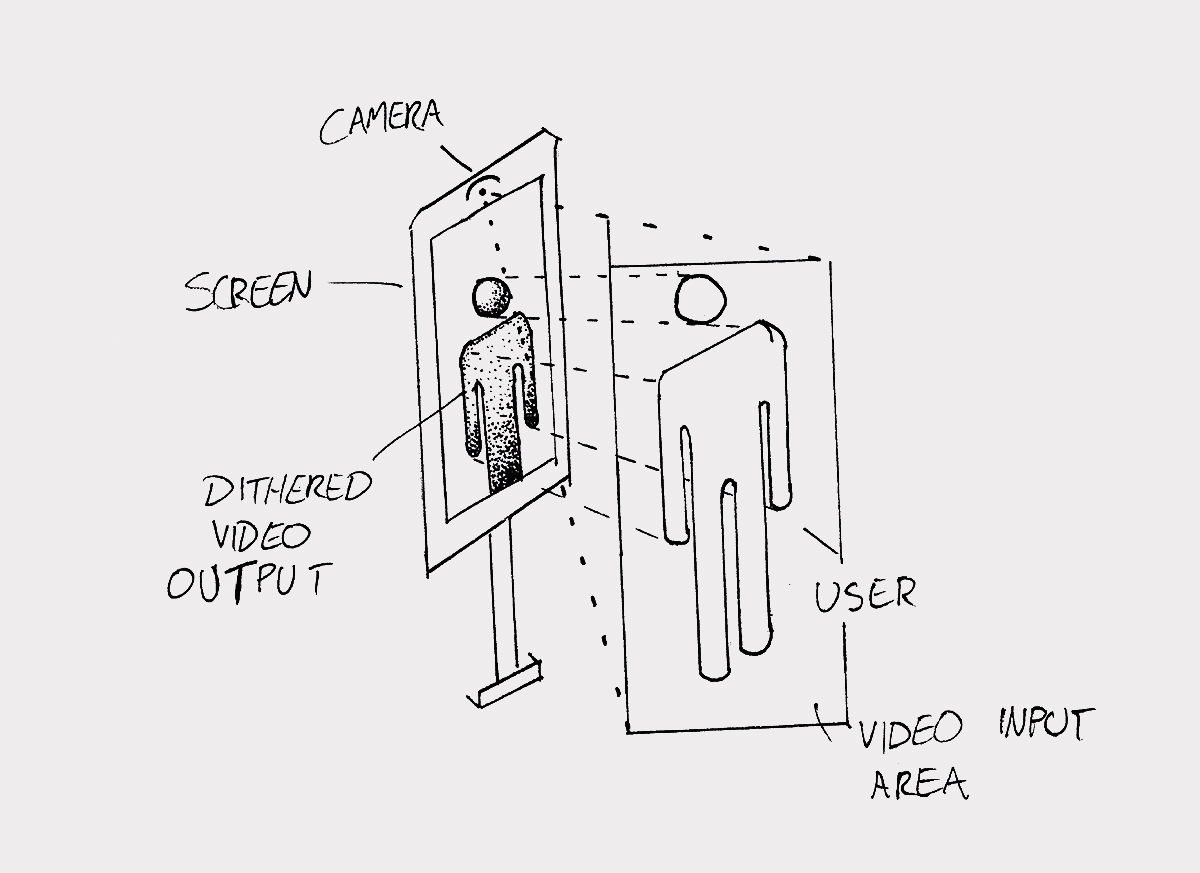
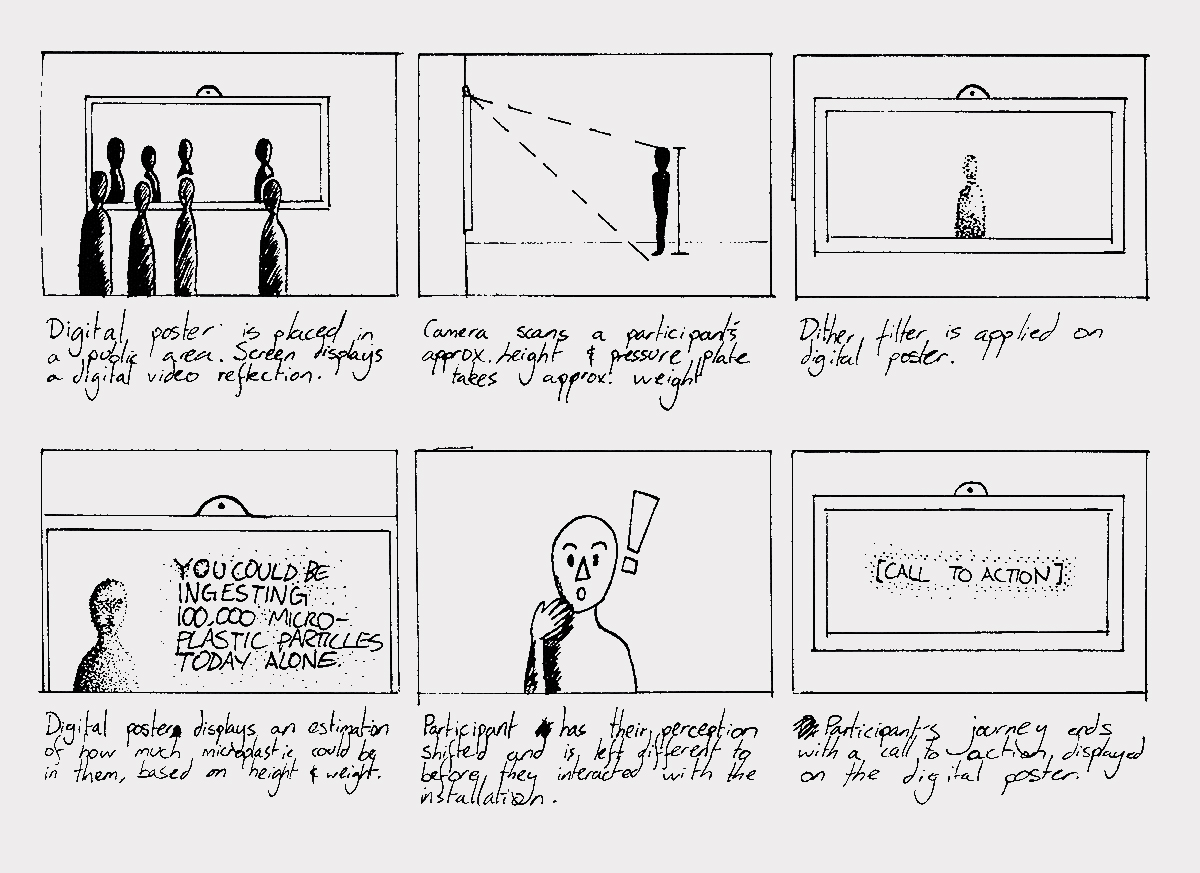
With the help of friends I filmed a video of how participants might interact with the display, applying the dithered filter I had made in After Effects. From here, I continued to develop the dithering, colour and typography to achieve the final visuals.
OWEN BLUE 2025.